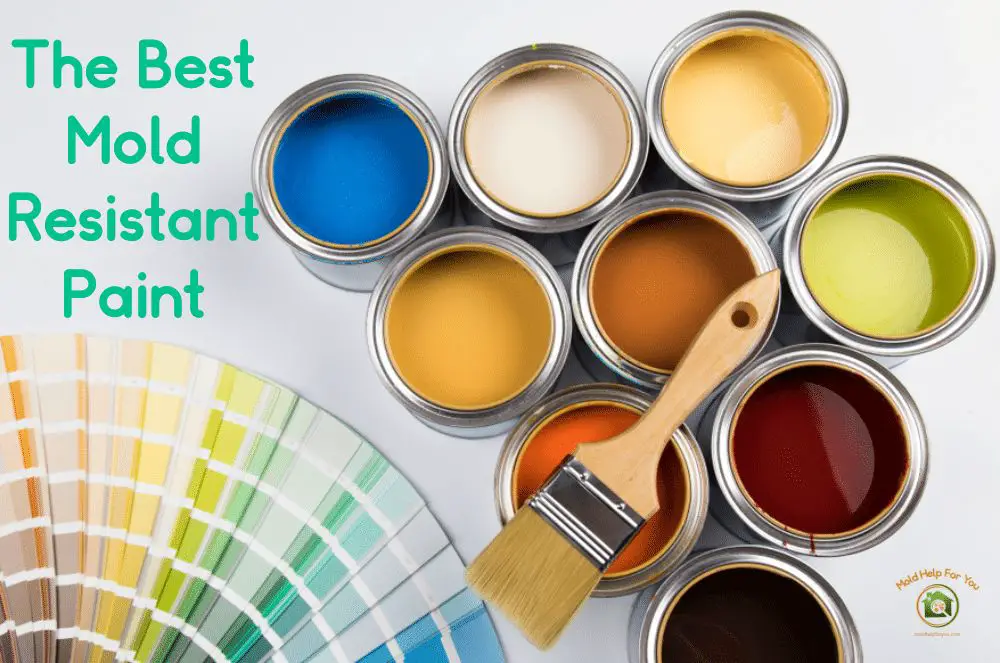Mold growth is a common problem in bathrooms due to the warm, humid conditions that promote mold growth. Choosing a mold resistant paint is an effective way to help prevent mold from developing on bathroom walls and ceilings. This article will discuss the most important factors to consider when selecting a paint for bathrooms, and provide recommendations for the best mold killing bathroom paints.
Page Contents
What causes mold in bathrooms?
Mold spores are present everywhere in the air we breathe. When these spores land on a damp surface and find the right conditions, they can rapidly multiply into mold colonies. Bathrooms provide an ideal environment for mold growth because of the warm, moist conditions. Key factors that lead to mold growth in bathrooms include:
- High humidity – From hot showers and baths
- Lack of ventilation – Not enough air circulation to dry out moisture
- Leaks or water damage – From showers, tubs, sinks, toilets etc
- Temperature – Warm conditions accelerate mold growth
- Organic materials – Drywall, wood, wallpaper provide food for mold
Controlling humidity and moisture is crucial to preventing mold in bathrooms. Proper ventilation, fixing leaks, and using mold resistant building materials are all important. However, using mold resistant paint as part of your bathroom maintenance routine can provide added protection.
Benefits of using mold resistant paint
Applying mold resistant paint in damp rooms like bathrooms has several advantages:
- Inhibits mold growth – Contains additives that prevent mold from growing on the painted surface
- Easy application – Applied just like regular paint over prepared surfaces
- Long lasting protection – Provides continuous mold resistance for years
- Extends time between paint jobs – Mold resistant coatings last longer than regular paint
- Aesthetically pleasing – Available in variety of sheens and colors
- Peace of mind – Reduces worrying about mold recurring after removing it
Using a high quality mold resistant paint provides a protective barrier that makes it harder for mold spores to colonize and grow. It won’t completely prevent mold, but helps provide long term resistance when combined with proper bathroom ventilation and moisture control.
What makes a paint mold resistant?
Mold resistant paints work by containing special additives that inhibit mold growth. The active ingredients that provide mold resistance include:
- Zinc oxide – Inhibits mold enzymes and development of fungal hyphae
- Sodium/potassium silicates – Increase alkalinity creating unfavorable environment for mold
- Triclosan – Anti-microbial agent that slows mold colony formation
- Chlorothalonil – Prevents mold growth during paint film formation stage
- Other biocides – Various other additives that kill and prevent mold
The combination and concentration of these additives gives mold resistant coatings their enhanced protection compared to regular paint. Always check that the paint specifically states it has mold resistance or mildew resistance properties.
How to choose the best mold resistant bathroom paint
Here are the most important factors to consider when choosing a mold resistant bathroom paint:
1. Location
Consider which bathroom surfaces most prone to moisture. Ceilings, shower walls, and areas around tubs and sinks will need the highest level of protection. Make sure to use a mold resistant paint on these higher risk areas.
2. Surface material
Certain materials like plaster or drywall are more vulnerable to moisture damage and mold growth than materials like tile and metal. Choose paint formulated for the specific surface material being covered.
3. Level of mold resistance
The concentration and combination of antimicrobial additives determines the level of mold resistance. Look for terms like “maximum mold resistance” or “antimicrobial formula” for highest protection.
4. Sheen level
Higher gloss, semi-gloss and satin sheens are easier to clean and more moisture resistant than flat paints. Eggshell is a good compromise of aesthetics and moisture resistance.
5. Durability and longevity
Check expected lifespan and scrubability to ensure the anti-mold protection will last. More durable epoxy mold resistant coatings provide longer resistance than standard acrylic paint.
6. Number of coats needed
Multiple coats provide better moisture protection. Consider applying 2 coats of mold resistant primer followed by 2 coats of mold resistant paint for maximum coverage.
7. Mold stain blocking
Paint that contains zinc oxide or other antimicrobials will inhibit recurring mold growth. But to block existing stains, choose a mold resistant paint formulated to seal in stains.
8. Easy application
The paint should have good flow and leveling with minimal splatter. If spraying, it should have low overspray. Look for key terms like “high-hide”, “low spatter” or “sprayable”.
9. Cleanup and odor
Consider paints with soap and water cleanup to make the job easier. Some have stronger odors so check suitability for confined bathrooms.
10. Color options
Aesthetics are still important in bathrooms. Choose whether you want colors and sheens to match existing paint or make a design statement.
Top picks for best mold resistant bathroom paints
With all the above factors considered, these products rise to the top as the best mold resistant bathroom paints:
| Paint | Key Features |
|---|---|
| KILZ Interior/Exterior Maximum Mold and Mildew Resistant Paint |
|
| Rust-Oleum Zinsser Perma-White Mold & Mildew Proof Interior Paint |
|
| INSL-X Waterblock High Gloss Acrylic Enamel |
|
| RMR-86 Instant Mold and Mildew Stain Remover |
|
KILZ Maximum and Zinsser Perma-White are top choices that provide long lasting broad spectrum mold resistance. For high gloss moisture barrier protection, INSL-X Waterblock is ideal for bathrooms. Pre-treating existing mold stained areas with RMR-86 will improve paint adhesion.
Conclusion
Preventing mold with paint involves selecting bathroom paints that contain mold inhibiting additives. Important factors in choosing a mold resistant bathroom paint include location, surface material, level of mold resistance, sheen level, durability, stain blocking, application, cleanup, and aesthetics. Top rated mold resistant paints include KILZ Maximum, Zinsser Perma-White, INSL-X Waterblock, and RMR-86 stain remover. Applying 2 coats of a high quality mold resistant primer and paint provides long lasting protection against mold growth in high humidity bathrooms.
